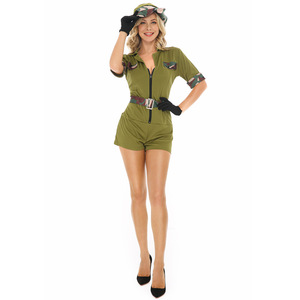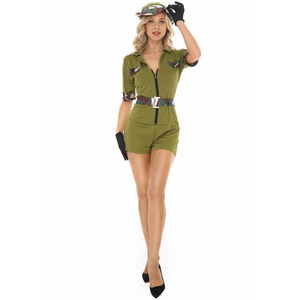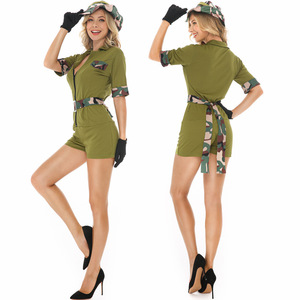
All categories
Featured selections
Trade Assurance
Buyer Central
Help Center
Get the app
Become a supplier

(932 products available)



















































The Malaysian army uniforms have several types. These types are based on the functions the soldiers perform and the seasons. Here are some of them:
The Malaysian army uniforms have been well designed to suit the needs of the Malaysian Armed Forces. Here are the design elements:
Camouflage Pattern
The Malaysian army camouflage pattern is a distinctive design used on military uniforms, equipment, and vehicles to blend in with various natural environments. The pattern consists of a mix of green, brown, and tan colors arranged in irregular shapes. This design helps soldiers conceal themselves in jungle and urban settings. The specific arrangement of colors and shapes varies slightly depending on the uniform version, but the overall intent remains consistent: to provide effective camouflage in Malaysia's diverse terrain.
Color Scheme
The Malaysian army uniform color scheme typically consists of green, brown, and tan colors. These colors are chosen to blend with the natural environment, especially in jungle settings. The specific shades and patterns may vary between different branches of the military and specific operations. For example, the army may use a three-color pattern comprising dark green, light green, and brown. At the same time, the air force and navy may prefer blue and grey colors that reflect their respective operational domains.
Rank Insignia
The Malaysian army uniform design incorporates rank insignia to denote hierarchy and roles within the military. These insignia are usually displayed on the sleeves, shoulders, or collars of the uniform. They consist of stripes, bars, stars, or other symbols that represent different ranks, from enlisted personnel to high-ranking officers. The design is straightforward, allowing for quick identification of a person's rank and, consequently, their responsibilities within the Malaysian Armed Forces.
Functional Pockets
The army uniform is designed with multiple functional pockets strategically placed for easy access to essential tools and items. These pockets enhance the uniform's practicality, allowing soldiers to carry and retrieve equipment efficiently during operations. The placement and design of the pockets are tailored to meet the specific needs of military personnel, ensuring they have quick access to what they need while maintaining the uniform's overall functionality and utility in various field conditions.
Durability Features
Durability features in Malaysian army uniforms include reinforced stitching at stress points to prevent seam failure. High-quality, abrasion-resistant fabrics like polyester-cotton blends are used to withstand wear and tear. Additionally, uniforms may incorporate water-resistant or moisture-wicking treatments for enhanced longevity and comfort in varying climates and conditions, ensuring they remain functional and reliable over time.
Headgear
The design of Malaysian army headgear, specifically their uniforms, incorporates functional and symbolic elements. The uniforms typically feature camouflaged patterns tailored to blend with the Malaysian jungle environment, emphasizing practicality in the field. Each rank has distinct insignia, from stripes to badges, signifying hierarchy and role within the military. The uniforms are complemented by headgear like berets or helmets, with specific colors indicating different branches of the armed forces. This design reflects a balance of functionality and representation of national pride and military tradition.
The Malaysian army uniforms are stylish and can be worn for different occasions. However, the right accessories and shoes should be worn with the uniform to make it look good. Below are five ways to wear and match the Malaysian army uniform.
Q1: What can one say about Malaysian army uniforms?
A1: Soldiers in the Malaysian army wear uniforms that are different from those of soldiers in other countries. The colors reflect the national flag and the camo patterns are designed to blend in with the tropical vegetation. The uniforms are clean, pressed and neat. The army places great emphasis on discipline and order, and this is reflected in the appearance of the soldiers.
Q2: How do Malaysian army uniforms differ from others?
A2: Malaysian army uniforms are distinctive. The colors reflect the national flag and the camo patterns are designed to blend in with the tropical vegetation. This is different from many other countries, where the uniform design is more influenced by military tradition than by environmental considerations. The Malaysian army places great emphasis on discipline and order, which is reflected in the appearance of their soldiers. They take pride in maintaining clean, pressed, and neat uniforms at all times.
Q3: What do Malaysian soldiers wear?
A3: Malaysian soldiers wear a camouflage uniform consisting of a blouse and trousers. The blouse has two breast pockets with flaps, and the sleeves can be rolled up and secured with tabs. The trousers have a straight leg and a cargo pocket on each side. The uniform is made of durable, breathable material that is suitable for the tropical climate. Soldiers also wear a beret or helmet, depending on their duties, and combat boots. The uniform includes rank insignia and identification patches.
Q4: Why do soldiers wear long sleeves in Malaysia?
A4: Soldiers in Malaysia wear long sleeves for several reasons. Firstly, the long sleeves provide protection from the sun, which is important in a tropical climate. Secondly, they offer protection against insect bites and skin irritation, which is crucial in a region with many insects and plants that can cause allergic reactions. Lastly, long sleeves are part of the military uniform, and wearing them maintains discipline and conformity within the ranks. Despite the heat, soldiers are trained to adapt to the climate and prioritize the uniform's protective and symbolic functions.